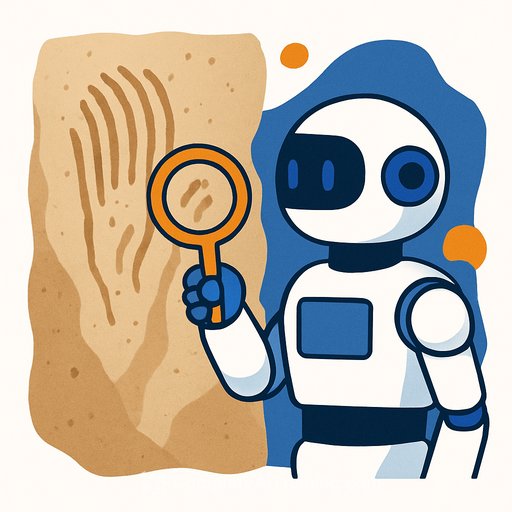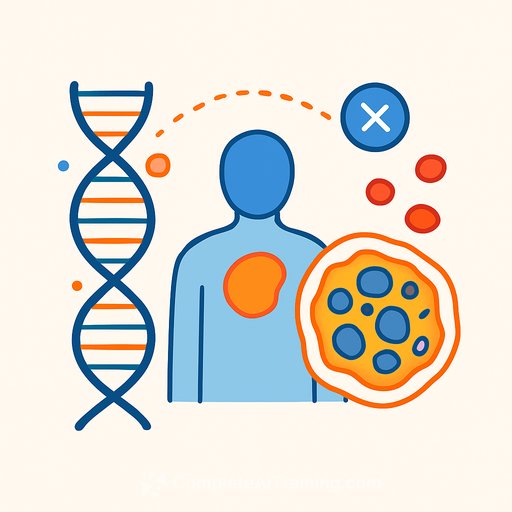AI Traces Identity in Ancient Finger Flutings
Every mark left on a cave wall is a conversation across time. Thousands of years ago, someone pressed their fingers into soft mineral film and drew looping lines - what archaeologists call finger flutings. These gestures endure, but the people behind them remain unknown.
That anonymity may be narrowing. A new study in Scientific Reports presents an AI pipeline that analyzes modern finger flutings to test whether the sex of ancient makers might one day be inferred. "Whether the marks were made by men or women can have real world implications," said Dr. Andrea Jalandoni in a press release.
What Are Finger Flutings?
Finger flutings are markings made by running fingertips through clay or mineral deposits on limestone cave surfaces. They appear across Western Europe and Australia, dating from roughly 60,000 to 12,000 years ago in the late Middle to Upper Paleolithic.
Archaeologists view them as among the earliest symbolic expressions, created by both Homo sapiens and Neanderthals. Researchers have long asked whether these marks can reveal age, sex, handedness, height, or individual style.
Why Sex Inference Matters
Past attempts often measured finger widths, a method criticized for surface variability and measurement error. The new AI approach seeks a more objective test by targeting geometric features in the marks themselves. If validated on ancient contexts, this could inform questions of social roles, access to cave spaces, and participation in symbolic practices.
Using AI and VR to Decode Finger Flutings
The team ran two controlled experiments with 96 adults. Each participant created nine flutings twice: once in a moonmilk-like clay substitute and once in virtual reality using a Meta Quest 3. Images trained two image-recognition models to detect geometric differences tied to sex.
The VR flutings did not yield reliable classifications. The tactile clay set performed much better. "Under one training condition, models reached about 84 percent accuracy, and one model achieved a relatively strong discrimination score," said Dr. Gervase Tuxworth in the press release.
Limits, Bias, and Reproducibility
The models also picked up artefacts of the experimental setup - a sign they are not yet ready to generalize to real caves. Still, the study establishes a repeatable link between physical replication and machine learning, a useful step for digital archaeology.
"We've released the code and materials so others can replicate the experiment, critique it, and scale it," said Dr. Robert Haubt of the Australian Research Centre for Human Evolution. The dataset and code are available on GitHub.
Practical Notes for Research Teams
- Start with controlled substrates: replicate moonmilk textures with known properties; log humidity, pressure, and finger angle.
- Capture multi-modal data: pair high-resolution photos with 3D microtopography to reduce lighting artefacts.
- Split rigorously: separate participants, sessions, and substrates across train/validation/test to avoid leakage.
- Benchmark multiple models: compare texture-based CNNs with shape descriptors; report calibration and confidence intervals.
- Control confounds: randomize finger order, hand dominance, and instruction sets; track gloves or residue to standardize friction.
- Pursue domain generalization: test across different clays and tools; use augmentation that mimics real cave surfaces.
- Pre-register analysis plans and share codebooks; release de-identified samples under clear licenses.
- Ethics and interpretation: treat "sex classification" as probabilistic; avoid overreach when mapping modern signals to Paleolithic populations.
What This Means for Archaeology
We have a proof-of-concept that links experimental archaeology, VR, and AI into one reproducible pipeline. The immediate win is methodological: a framework others can stress-test and improve. The long-term value is cautious inference about identity and participation in Paleolithic art, grounded in validated, open methods.
Build Your Lab's AI Capability
If your team is formalizing AI skills for research workflows, you can explore practical training resources: AI courses by job and AI certification for data analysis. Use them to standardize skills around data handling, model selection, and reproducibility.
Key Details at a Glance
- Participants: 96 adults; each produced nine flutings in clay and nine in VR.
- Performance: physical (clay) data enabled sex classification around 84 percent accuracy under one training condition; VR did not perform well.
- Status: proof of concept; models captured setup artefacts and need domain-general validation.
- Availability: code and materials released for replication and critique.
Sources and Further Reading
- Scientific Reports (Springer Nature)
- GitHub: open dataset and code (repository provided by the authors)
Your membership also unlocks:






